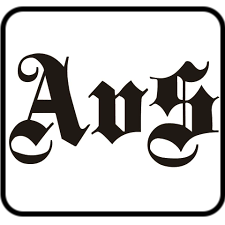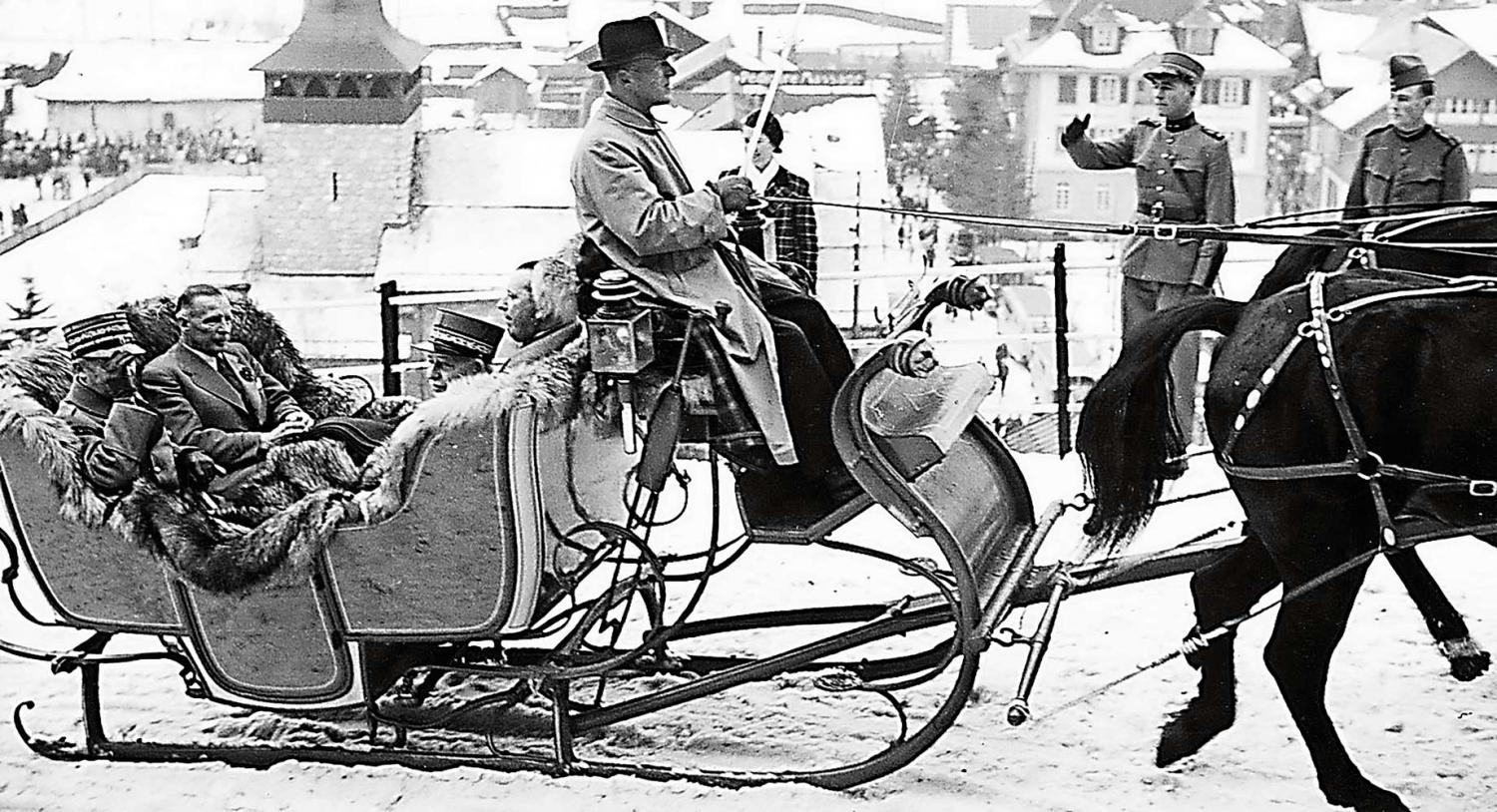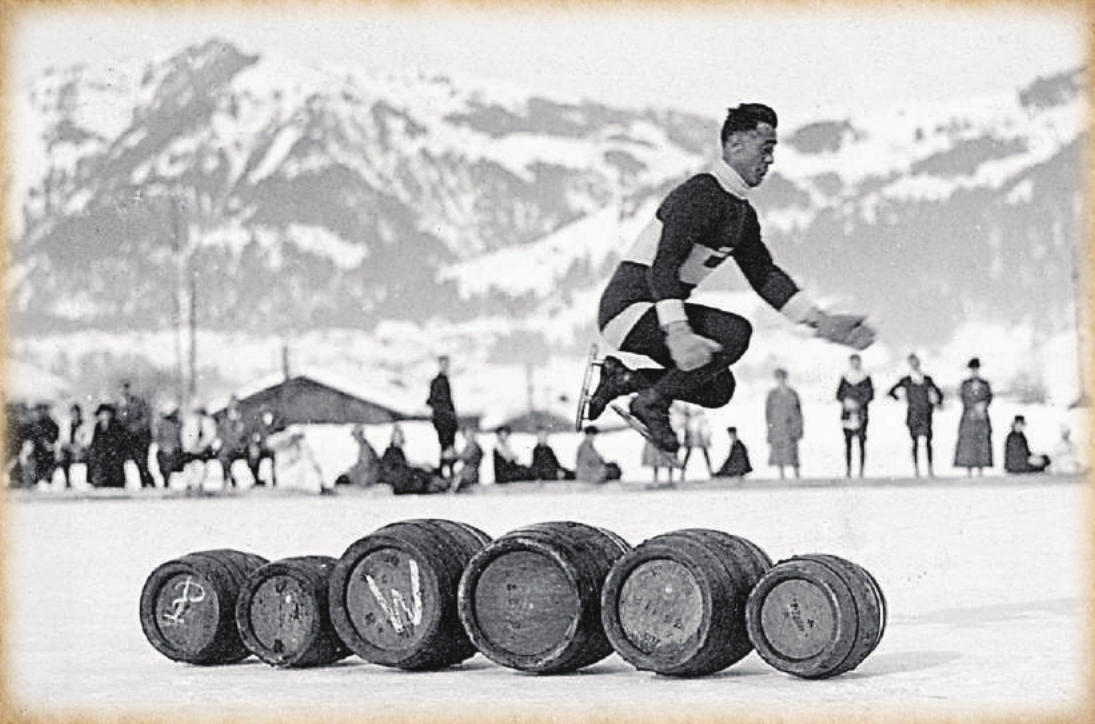Gstaad, as it was back then: part II
18.08.2020 Gstaad LivingWhat was achieved at great financial cost in 1999, namely a car-free Gstaad, was already in place, especially during the war. There were about ten cars on the roads, all of which were well-known. Mr. Deppeler from the Pension Alpenblick owned an elegant, beige, rectangular classic car, the Kübli Garage some taxis, the Hotel Alpina a light blue Austro-Daimler. Director Scherz from the Palace Hotel had a black Ford convertible, the beer depot Reinhard a beautiful light green Ford truck with double tires on the rear wheels, Dr. Kaufmann a jeep. Besides that, some other people had a vehicle like the photographer Naegeli, but many were not allowed to drive at all during the war.
Instead of cars, in the summer there were various horse-drawn carriages, be it for transportation or farming, and carriages circulated with hotel guests. In winter – the streets were never entirely cleared from the snow, which in large amounts everywhere – it was the time of sleighs and log carriages.
The Palace Hotel had an impressive four-in-hand for every season. To shorten our way to school, we jumped on the back of many a vehicle and were either tolerated by the coachman or chased away with a crack of the whip.
Naturally, sporting and cultural events were also organised. In winter, ski jumping on the large Mattenschanze or on the small hill in the Kählen (behind the MOB viaduct) as well as various ski races. In 1940 the Swiss Ski Championships were held in Gstaad. As they were under the honorary presidency of General Henri Guisan, they became an important event for the destination. During his stay, the commander-in-chief of the Swiss Army received an invitation from the president of the municipality, Walter von Siebenthal, to a sumptuous lunch at the Hotel Palace. The meal for this occasion supposedly was the traditional soldier’s menu pot-au-feu.
On 1 January, there was a skating show on the village ice rink with acrobatic performances by my father, who was a skating instructor at the time. Either he was dressed as an old market woman who could barely stay upright on her skates, or he wore a fancy costume and jumped over a considerable number of beer barrels.
From the Hotel Alpina down into the Kählenweg and then into the Dorfstrasse, there used to be a bobsleigh run with an extended curve, where you could even ride a four-man bobsleigh. Later there was a skeleton run: a track for low sports sleds with a handlebar to steer. The bobsleighs and skeletons could be rented in my grandfather’s sports shop. From the large wooden grandstand, the same Viennese waltzes sounded daily from a large loudspeaker over the heads of the ice-skating guests all winter long.
In summer, the international tennis tournament as well as various Swiss wrestling festivals took place. As a predecessor to today’s Menuhin Festival, the Musiksommer was held in the large hall of the Palace Hotel, under the direction of Professor Hermann Scherchen.
Every year on 1 August, a big celebration with a speech and a gymnastic performance of the men’s squad took place on the Reichenbachmatte next to the tennis court, which ended with a human pyramid. I was once at the very top, holding two Swiss flags in my outstretched arms. But first there was always the popular torchlight procession for the children, which started at the primary school building in the Rütti and led through the whole village to the fairground.
Of course a lot has changed since the mid-1950s. A huge number of chalets were built, and especially in the village itself there have been major changes. Hotels have been demolished and rebuilt; this also applies to many commercial buildings that suffered the same fate or were then only rebuilt or given a new extension. With the exception of very few buildings – the Hotels Rössli and Olden or the Chalet Central – almost everything has changed, including the MOB railway crossing, which used to look similar to the viaduct, with two arches of grey stone blocks each, which would now fit much better into the “new” traffic-free Gstaad.
Customs have also changed. In the old days, if someone died, they’d still be laid out at home. From the home of the deceased, a funeral procession accompanied the deceased to the church in Saanen. Depending on the number of people who joined the funeral cortege, one speculated how important or popular the deceased had been.
I can still see these funeral processions in front of me, mainly those that took place in the pouring rain, with black-clothed villagers holding black umbrellas and following the horse-drawn hearse. People paid attention to what kind of new hat this or that one had worn, and it is said that on such occasions various deals and horse-trades were closed.
BASED ON ANTON RUESCH





